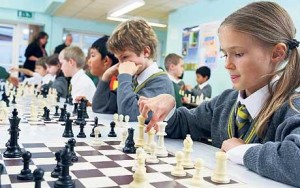 At its core, the visual spatial processing index measures a child’s ability to analyze and assess visual information and details, recognize part-whole relationships, and apply this knowledge to construction and manipulating visual information. Tasks on the visual spatial index are important for doing high-level and advanced mathematics such as geometry and calculus. The visual spatial processing index measures the ability to organize visual information into meaningful patterns, understanding how these patterns change, rotate, and move through space.
At its core, the visual spatial processing index measures a child’s ability to analyze and assess visual information and details, recognize part-whole relationships, and apply this knowledge to construction and manipulating visual information. Tasks on the visual spatial index are important for doing high-level and advanced mathematics such as geometry and calculus. The visual spatial processing index measures the ability to organize visual information into meaningful patterns, understanding how these patterns change, rotate, and move through space.
Visual-spatial skills reflect a child’s capacity to understand and evaluate visual details and relationships between visual components. The visual spatial processing index measures the capacity to construct geometric designs from models and requires the use of observation, spatial reasoning, and the integration and synthesis of visual details. Strengths in visual-spatial skills include attending to spatial details and the capacity to analyze and process pictures or visual representations.
Children who struggle with visual spatial processing may have difficulty in accessing mental visual images or struggle with understanding their orientation within a particular space. Difficulty with visual-spatial skills becomes evident when children do not see partially hidden information or cannot combine smaller points of information into a meaningful whole. Low scores on measures of these abilities may also reflect modest nonverbal reasoning skills. Children with difficulty in this area may struggle in looking at a maze and finding a path and have problems estimating or comparing visual lengths and distances. Difficulty in remembering letter formation and letter patterns may be seen in younger children with these concerns. Some children with visual-spatial impairments may have problems reading charts, maps, and other visual material and cannot arrange their desk, backpack, or bedroom visually. They may miss seeing certain visual details and have difficulty copying information that is complex in terms of drawing, including maps or simple homework assignments written on a blackboard.
Receive online class information and helpful tips from Dr. Randy Kulman's LearningWorks for Kids |



